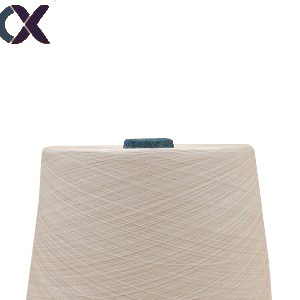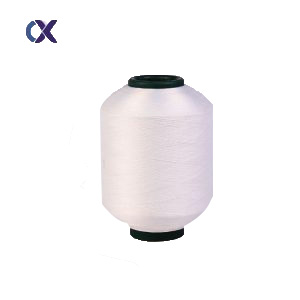- Chinese
- French
- German
- Portuguese
- Spanish
- Russian
- Japanese
- Korean
- Arabic
- Irish
- Greek
- Turkish
- Italian
- Danish
- Romanian
- Indonesian
- Czech
- Afrikaans
- Swedish
- Polish
- Basque
- Catalan
- Esperanto
- Hindi
- Lao
- Albanian
- Amharic
- Armenian
- Azerbaijani
- Belarusian
- Bengali
- Bosnian
- Bulgarian
- Cebuano
- Chichewa
- Corsican
- Croatian
- Dutch
- Estonian
- Filipino
- Finnish
- Frisian
- Galician
- Georgian
- Gujarati
- Haitian
- Hausa
- Hawaiian
- Hebrew
- Hmong
- Hungarian
- Icelandic
- Igbo
- Javanese
- Kannada
- Kazakh
- Khmer
- Kurdish
- Kyrgyz
- Latin
- Latvian
- Lithuanian
- Luxembou..
- Macedonian
- Malagasy
- Malay
- Malayalam
- Maltese
- Maori
- Marathi
- Mongolian
- Burmese
- Nepali
- Norwegian
- Pashto
- Persian
- Punjabi
- Serbian
- Sesotho
- Sinhala
- Slovak
- Slovenian
- Somali
- Samoan
- Scots Gaelic
- Shona
- Sindhi
- Sundanese
- Swahili
- Tajik
- Tamil
- Telugu
- Thai
- Ukrainian
- Urdu
- Uzbek
- Vietnamese
- Welsh
- Xhosa
- Yiddish
- Yoruba
- Zulu
- Kinyarwanda
- Tatar
- Oriya
- Turkmen
- Uyghur

Blogs
Harnessing the Power of the Ocean: The Rise of Regenerated Polyester Fibre Yarns
Share:
In recent years, the marine environment has been facing an unprecedented crisis. Severe pollution, especially plastic pollution, has escalated into a global catastrophe. A report released by the United Nations Environment Programme on World Environment Day in 2018 shocked the world. It revealed that millions of tons of plastic find their way into the oceans each year. This massive influx of plastic is wreaking havoc on marine ecosystems around the globe.
The consequences of plastic pollution in the oceans are far – reaching. Marine life, from tiny plankton to large whales, is being severely affected. Many marine animals mistake plastic debris for food, leading to ingestion and often death. Moreover, plastics break down into microplastics over time. These microplastics enter the food chain, and as smaller organisms are consumed by larger ones, the problem moves up the food chain, eventually reaching human beings. The potential health risks associated with microplastic ingestion are still being studied, but the threat they pose is undeniable.
In the face of this dire situation, the application of marine renewable materials has emerged as a crucial solution. Among these, regenerated polyester fibre yarns sourced from the ocean are leading the way in sustainable innovation.
These unique yarns are made from 100% marine polyester (1.33tex*38mm). Their raw materials? Plastic bottles salvaged from the ocean. Instead of letting these discarded plastics continue to pollute marine habitats, they are collected, processed, and transformed into high – quality yarns. This process not only helps clean up the oceans but also significantly reduces the demand for virgin polyester production. The production of virgin polyester is highly energy – intensive and contributes to a large amount of carbon emissions. By using recycled materials, we can conserve energy and reduce our carbon footprint.
The versatility of marine regenerated polyester fibre yarns is one of their most remarkable features. They can be customized to meet the needs of different applications. For knitting, they can create soft and comfortable fabrics, perfect for clothing that requires a gentle touch against the skin. In weaving, they can be used to produce sturdy and durable materials, suitable for a wide range of products. There are even sizing – free options available, which is a great advantage for industries looking to minimize chemical usage during the textile production process.
In the clothing industry, these yarns are revolutionizing fashion. Designers are using them to create stylish and sustainable garments. Consumers, becoming more environmentally conscious, are eager to support brands that use such eco – friendly materials. This trend is not only changing the way we think about fashion but also driving the demand for more sustainable textile solutions.
For home textiles, marine regenerated polyester fibre yarns bring both comfort and environmental responsibility. From cozy bed linens that provide a good night’s sleep to elegant curtains that adorn our homes, these yarns ensure that our living spaces are not only beautiful but also eco – friendly.
In the industrial textile sector, the strength and durability of Regenerated Polyester Fibre Yarnsmake them ideal for a variety of applications. They can be used to produce heavy – duty bags that can carry large loads, durable tents for outdoor activities, and geotextiles that play a crucial role in construction and environmental protection projects.
The adoption of marine regenerated polyester fibre yarns represents a significant shift in the textile industry. It is a clear sign that we are moving towards a more circular and sustainable economy. By turning ocean waste into valuable resources, we are taking a giant leap in the fight against plastic pollution.
Previous News
The Green Revolution in Textiles: The Rise of R...Next News
Marine Regenerated Yarn: A Green Miracle of Tra...Share:
Feature Product
-
 Wool yarn
Wool yarn1.Product Introduction Wool yarn, often also kn...
-
 Viscose yarn
Viscose yarn1.Product Introduction Viscose yarn is a popula...
-
 Spandex Yarn
Spandex Yarn1.Product Introduction Elastane, another name f...
